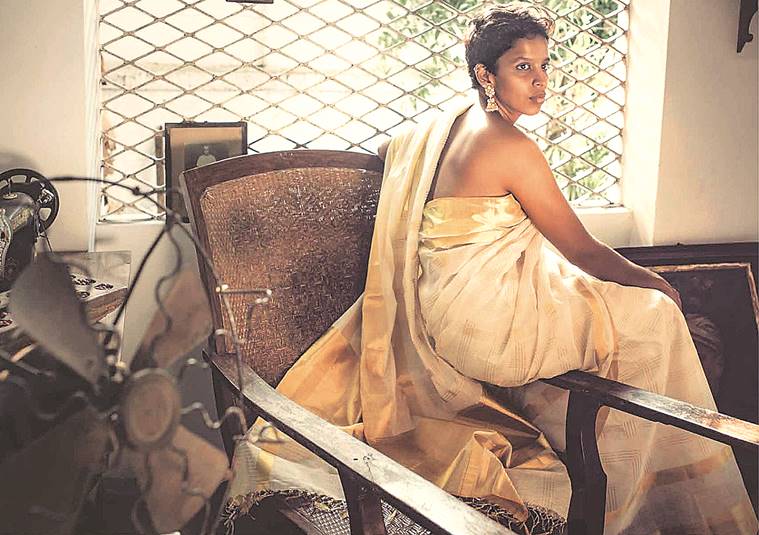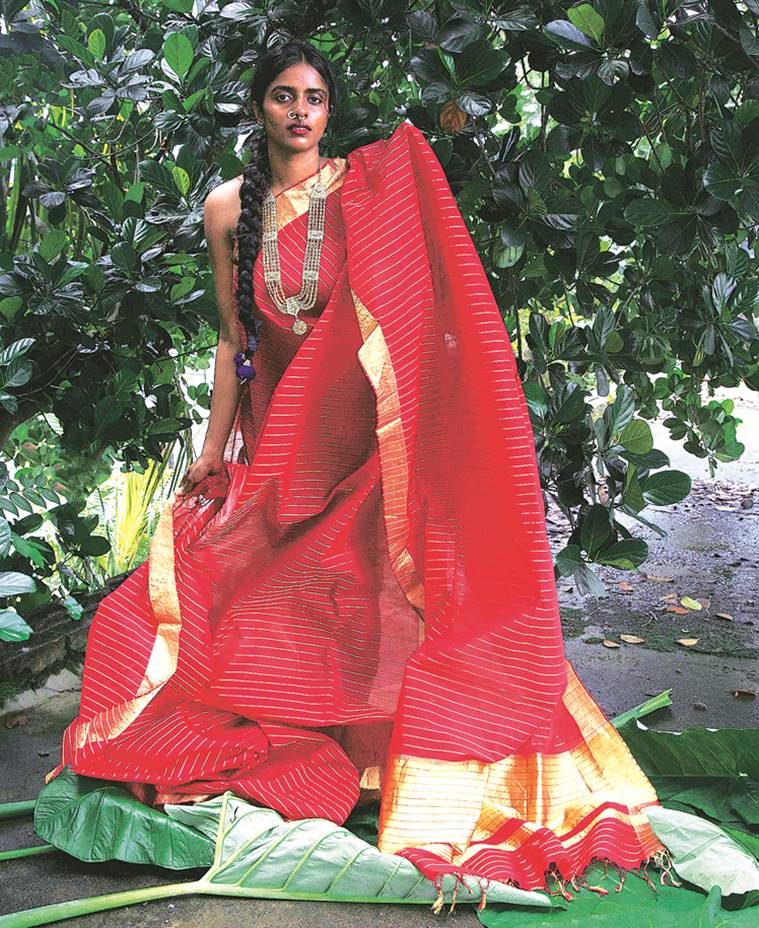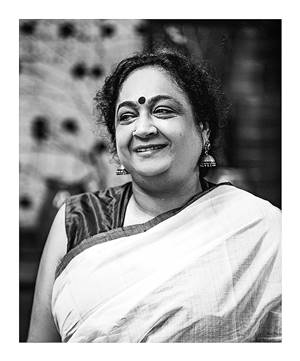 The kasavu saris have been contemporised with colours and motifs
The kasavu saris have been contemporised with colours and motifs
The small town of Balaramapuram in Thiruvananthapuram, Kerala, is in a way an identity marker for the state. Historically, one of the inception hubs for cotton handloom fabric, it has become synonymous with the gold border cream kasavu saris and mundu neriyathe (lungi and upper cloth). In Delhi, an exhibition of woven fabric from this town has been brought to Dastkari Haat Studio by Usha Devi Balakrishnan of Anka. With a workforce of nearly 150, mostly women, Balakrishnan has 20 master weavers whom she engages with for her collection of saris.
Her label Anka, which translates as ‘close to the body’, is Balakrishnan’s year-old foray into the traditional art of Balaramapuram weaving. Before her retirement from public service, Balakrishnan was also Regional Director of the government’s Kudhumbshree Project.

An initiative to help people below poverty line, these interactions helped her understand the challenges of weavers from this area. “When I met them they were weaving school uniforms as part of a government scheme. I realised that it didn’t do any justice to their skills. I began Anka as a way to promote their highly efficient technique of weaving, which, like a Paithani sari, looks the same on either side. Basically, there is no wrong side to the sari. The fabric can be worn on both sides,” says Balakrishnan.
 Usha Devi Balakrishnan
Usha Devi Balakrishnan
The Balaramapuram handloom story goes back centuries, when king Balarama Varma and his prime minister Ummini Thampi invited weavers from Nagercoil in Tamil Nadu in the early 19th century. They were given pride of place in the state to live and work, where they would weave cloth for the royal family of Travancore.
Weavers from the Shaaliyar community made Balaramapuram (named after the king) their home and even today, one finds the tradition continuing in many households. While it was not uncommon to find a pit loom in almost every house, the numbers are dwindling, marked by challenges from the power loom industry and lack of market access.
A self-taught designer, Balakrishnan has worked with contemporary designs on the traditional cream and gold fabric, using colours as well as floral motifs, stripes and dots in innovative ways. “One can’t experiment too much on the loom, so I focus on simple and elegant designs,” she says. Climate-sensitive, these saris are done to perfection.
“During the recent Kerala floods while we were not directly affected, the pit looms had become damp and the weavers stalled work because working with cream threads meant they couldn’t have them soiled. It has certainly slowed down production for daily wage workers,” says Balakrishnan. While Anka sari collection begins from Rs 6,000 upwards, its uniqueness lies in the richness of the zari, its chemical-free cotton, and its position as a label that straddles modernity and tradition with ease.